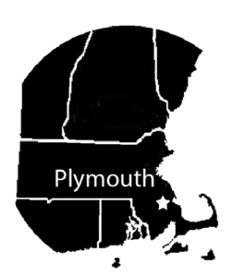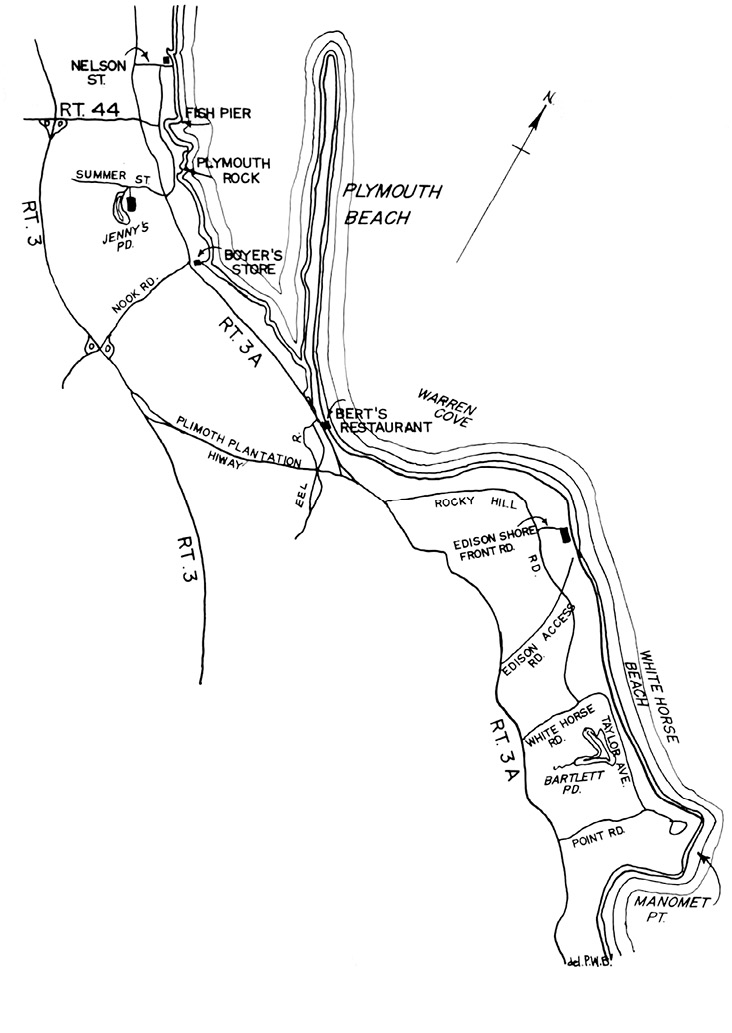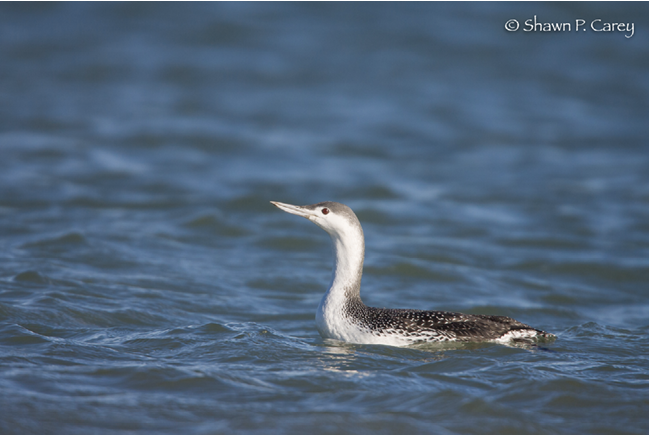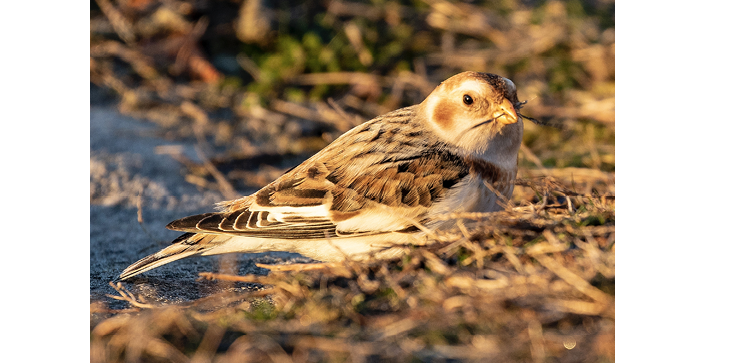Wayne R. Petersen and Bruce A. Sorrie
 For the Bay State birder who has neither the time nor the inclination to drive to Cape Cod for a day of winter birding, the Plymouth-Manomet area can provide a pleasant substitute. Lying along the southern coastal plain, this region enjoys much the same mild winter climate as the Outer Cape. Add to its location on a fine saltwater bay and harbor fresh ponds, which remain open for much of the winter, and low swampy woods with numerous berry-bearing thickets, and you have an ideal spot in which to find regular winter birds as well as semi-hardy winterers and tardy migrants.
For the Bay State birder who has neither the time nor the inclination to drive to Cape Cod for a day of winter birding, the Plymouth-Manomet area can provide a pleasant substitute. Lying along the southern coastal plain, this region enjoys much the same mild winter climate as the Outer Cape. Add to its location on a fine saltwater bay and harbor fresh ponds, which remain open for much of the winter, and low swampy woods with numerous berry-bearing thickets, and you have an ideal spot in which to find regular winter birds as well as semi-hardy winterers and tardy migrants.
Among seabird species, Red-throated Loon, Red-necked Grebe, Brant, Oldsquaw, and Surf Scoter are all dependable, while such fancies as Barrow's Goldeneye and King Eider are far more regular in this area than in most of the state's other coastal regions. During much of October and into early November impressive diurnal migrations of loons, cormorants, and sea ducks can be witnessed from Manomet Point.
Thicket birding during the colder months will often yield Winter and Carolina wrens, Gray Catbird, American Robin, Hermit Thrush, both kinglets, Cedar Waxwing, lingering blackbirds, House Finch, Rufous-sided Towhee, and Field Sparrow. Although Plymouth Beach peninsula is inaccessible to most winter birders, the area is attractive to roosting gulls and winter shorebirds, and the hardy dune-hiker will often be rewarded with Savannah (Ipswich) Sparrow, Short-eared Owl, Brant, and Snow Bunting. (Note: see article on Plymouth Beach birding in BOEM May-June 1973).

Map of Plymouth area.

Red-throated Loon. Photograph © Shawn P. Carey.
The following suggested route can be variously worked to suit your own interests, but don't limit yourself just to the winter season, for most of the spots are productive from October through May. If one approaches from the north, take Rte. 44 to the east off Rte. 3. This will take you toward Plymouth and to Rte. 3A. Turn left (north), proceed 1/2 mile, and turn right onto Nelson Street. Go to the parking lot beyond the end of the street. This is a fine spot from which to observe ducks and gulls in the harbor. It is best on half tides as the outer mussel beds and mud flats are becoming exposed or covered. Tremendous strings of eider totaling 40000–5000+ can be seen as they enter or leave the harbor. Brant can often be picked out among the Canada Geese, Black Ducks, and eiders. The shorebird flats are usually good for wintering Dunlin, Sanderling, Killdeer, and occasionally other semi-hardy species. They are also quite productive throughout the fall shorebird migration.
Return to Nelson Street and immediately turn left onto Water Street. Continue along the coast to Plymouth Rock, and park in the semi-circle just beyond. Here is an excellent spot for Buffleheads, Common Goldeneyes, Red-breasted Mergansers, and occasionally Common Mergansers or white-winged gulls. It is the most dependable spot on the South Shore for Barrow's Goldeneye. As the tide recedes, this species favors the rocky shore, and close looks can be had; at lower tides the birds (up to 7 annually) apparently favor mussel beds over toward Plymouth Beach. Town Wharf fish piers, 1/4 mile to the north, are sometimes good for unusual gulls.
Follow Water Street to Rte. 3A. Cross diagonally over 3A, past Friendly's Ice Cream shop, and go left on Summer Street at the Governor Carver Motel. Take a left at the sign to Town Brook Park. This millpond is known locally as Jenny's Pond and is where people often come to feed the swans and ducks. Among the tame exotic species will usually be a few Pintails, American Wigeons, American Coots, and Pied-billed Grebes. As other ponds freeze up, an occasional Green-winged Teal, Canvasback, Wood Duck, or Redhead will appear. This is an excellent spot to note the finer points of Ring-billed and Herring Gull plumage variation. The swampy thickets bordering the southern end of the pond have yielded towhees, thrashers, Swamp Sparrows, etc. On the west side is a large white house with feeders that have been visited regularly for the past three winters by two Rose- ringed (Ring-necked) Parakeets (Psittacula krameri), liberated from an unknown source. One needn't trespass onto private property to see these spectacular birds, for their size, coloration, and voice are easily noted from Jenny's Pond.
Go back to Rte. 3A, and head south about .7 miles to Boyer's Paint Store on the left, and park in the small lot. If you are alone (not with your bird club caravan), ask permission to bird in the marsh and adjacent brook along the north side. Here can be found wintering snipe, rails, and blackbirds, while the thickets are good for lingering wrens, Yellowthroats, and Gray Catbirds. A check along the harbor front should reveal Belted Kingfisher, Mourning Dove, House Finch, and perhaps a Killdeer on the beach itself. The offshore flocks of Black Ducks often contain a few wigeon or Green-winged Teal; Canada Geese are numerous. Diagonally across Rte. 3A, Nook Road follows farther up the same stream and provides nice looks at Field Sparrows, Winter Wrens, Carolina Wrens (occasionally), Cedar Waxwings, and other sparrows. Do not go into the private fish hatchery; the thickets are easily done from the road.

Snow Bunting. Photograph by Neil Dowling.
Continue down Rte. 3A a short distance to Bert's Restaurant, and park at the sea wall. If you haven't time to do Plymouth Beach, at least check the fresh and brackish marshes along Eel River at the base of the peninsula. Three species of rails and both saltmarsh sparrows have been found here into January. The broad cove off the sea wall usually produces two or three species of scoters, plus loons, Oldsquaw, and Horned Grebe. The cattail marsh across from Bert's supports a breeding colony of Long-billed Marsh Wrens, some of which may linger, while the open water often yields Pied-billed Grebes, Mute Swans, various ducks and Great Blue Herons. The thickets and wet pockets on the south side produce rails. Yellow-rumped Warblers, and Swamp Sparrows.
Go southward on 3A and turn left onto Rocky Hill Road opposite the golf course. After some 1.2 miles you will pass through many choice thickets and a deciduous woodland that continues for another .8 miles. Nearly all of it belongs to Boston Edison and is the site of the Pilgrim Nuclear Power Plant. The company is rightfully concerned with trespassers, so stay on paved roads. Here are found Carolina Wren (often singing on bright days). Winter Wren, Tufted Titmouse, Hermit Thrush, sparrows and other thicket dwellers. Spring and summer bring these breeders: Carolina Wren, White-eyed Vireo (try down the shorefront road), Scarlet Tanager, and both cuckoos. A walk along Rocky Hill Road after a migrant wave can be surprisingly productive: one author had in one morning over 60 species including 17 warblers. Edison's shorefront road ends at a parking lot overlooking a rocky coastline where winter seafowl (including Red-necked Grebe) are found. To the right, massive breakwaters flank the discharge canal whose swift waters are attractive to fish, and thus in turn to larids, especially post-breeding birds including Forster's and Black Terns, Laughing, Bonaparte's and Ring-billed Gulls.
Rocky Hill Road ends at White Horse Road. Go left on it, and at the sharp corner pull off into the vacant lot. Sea ducks are usually plentiful here, and King Eiders are surprisingly regular (usually females or young males). This thickly settled area supports a sizable breeding colony of House Finches, plus Mockingbirds and Cardinals. Drive 1/4 mile to Bartlett Pond on the right. The back reaches of this pond remain open and regularly harbor wigeons, Pintails, Pied-billed Grebes, and Coots. This winter three Gadwalls are a feature there.
If you have no luck with King Eiders at White Horse Beach, continue along the coast to Manomet Point and look off from that commanding vantage point. Manomet Point, with its 50-foot bluffs, provides one of the best observation points anywhere along Cape Cod Bay. It is here that fabulous sea duck and loon migrations are seen in October and November. Many of these same species spend the winter in lesser numbers around the extensive, rock- strewn tidal area. The Point has historically been one of the state's most reliable spots for Red-necked Grebes and in late winter or early spring over 25 have been seen at once. During severe northeast storms, Manomet Point should be checked for alcids and pelagics, which often find food and shelter below the cliffs. In migration, anything is possible from the Point, and the writers have seen such interesting species as Cory's Shearwater, Northern Fulmar, Leach's Storm-Petrel, phalaropes, and Little Gull, in addition to the more regular Gannet, Black-legged Kittiwake, and Parasitic Jaeger.
While this is by no means a complete survey of the winter bird life, at least it gives a feeling for the relative potential of the region. We hope it will stimulate others to try what we feel to be a choice winter locality.
Also see: Birding Plymouth Beach